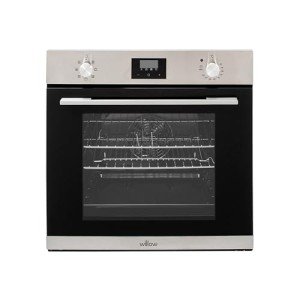The Comprehensive Guide to Built-In Ovens: Features, Benefits, and FAQs
Built-in ovens are a popular choice for modern-day kitchen areas, providing flexibility, performance, and a sleek style that integrates flawlessly into cabinets. This article will look into the numerous aspects of built-in ovens, including their functions, advantages, setup choices, maintenance tips, and responses to frequently asked questions.
What is a Built-In Oven?
A built-in oven is developed to be installed within kitchen cabinetry and is available in different setups, such as single or double ovens. Unlike freestanding ovens, built-in models supply a structured look and provide more flexibility in kitchen style. They are available in electric, gas, and steam choices, accommodating a series of cooking choices.
Functions of Built-In Ovens
Built-in ovens are packed with features that boost cooking experiences. Here are a few of the most typical features to consider:
| Feature | Description |
|---|---|
| Self-Cleaning | Many designs consist of a self-cleaning function that burns residue at heats, streamlining maintenance. |
| Convection Cooking | This feature uses a fan to distribute hot air, cooking food more evenly and quickly. |
| Smart Technology | Some ovens come equipped with Wi-Fi connectivity, permitting users to manage the oven from another location through mobile phone. |
| Multiple Cooking Modes | Consist of options such as baking, broiling, roasting, and air frying, providing adaptability for different dishes. |
| Temperature Probe | Keeps track of the internal temperature of food, guaranteeing completely prepared meals every time. |
| Sleek Design Options | Readily available in different surfaces (stainless-steel, black, white) to match kitchen design. |
Benefits of Built-In Ovens
The installation of a built-in oven brings many benefits to any kitchen:
- Space Efficiency: Built-in ovens take full advantage of kitchen space, providing a tidy and orderly appearance without compromising performance.
- Enhanced Cooking Performance: With sophisticated functions like convection cooking and precise temperature controls, built-in ovens frequently outshine traditional designs.
- Design Flexibility: These ovens can be installed at eye level, permitting simple gain access to without bending down, which can be especially helpful for individuals with physical restrictions.
- Improved Resale Value: A properly designed kitchen with high-quality built-in appliances may appeal to potential purchasers, improving general home value.
- Modification Options: Many brands use adjustable styles that fit the particular measurements and aesthetic of private cooking areas.
Installation Options
When picking a built-in oven, comprehending the setup options is vital. Here are the most typical setups:
- Single Built-In Oven: Ideal for smaller sized cooking areas, these units offer enough space to cook a variety of dishes at the same time, best for daily cooking.
- Double Built-In Oven: Best fit for devoted cooks and large families, double ovens permit synchronised cooking at 2 different temperatures, ideal for meals that need diverse cooking approaches.
- Combination Steam and Oven: A hybrid option that integrates the advantages of traditional baking with steam cooking. This option is exceptional for keeping wetness in foods, making it best for baking bread or roasting meats.
Upkeep Tips for Built-In Ovens
Maintaining a built-in oven is vital for its durability and optimal efficiency. Here are some useful maintenance tips:
- Regular Cleaning: Use the self-cleaning function when necessary, and wipe down the outside and interior surface areas regularly to avoid grease buildup.
- Inspect the Seals: Inspect the oven door seals for any wear or damage to ensure proper insulation and cooking performance.
- Temperature Calibration: Occasionally evaluate the temperature level accuracy utilizing an oven thermometer, specifically if cooking times appear longer than typical.
- Ventilation: Ensure appropriate ventilation around the oven to prevent overheating, specifically for built-in models that may be surrounded by cabinetry.
FAQs About Built-In Ovens
1. Are built-in ovens more costly than freestanding designs?Yes, built-in ovens tend to be more costly due to their style, setup requirements, and additional features. However, their benefits can validate the cost in the long run.
2. Can you set up a built-in oven yourself?While some convenient individuals might try to install a built-in oven, it is advised to work with an expert to make sure proper installation, ventilation, and security standards.
3. What is the typical lifespan of a built-in oven?The typical lifespan of a built-in oven is around 10 to 15 years, depending on use and upkeep. built in oven hob packages can assist extend its durability.
4. Are built-in ovens energy effective?Lots of modern-day built-in ovens are created with energy performance in mind, incorporating functions like insulation and precise temperature level controls that may lower energy usage compared to older models.
5. Can a built-in oven be repaired if it breaks?Yes, built-in ovens can frequently be repaired. It is recommended to get in touch with a qualified service technician for diagnoses and repair work to make sure safety and compliance with service warranty agreements.
Built-in ovens are an outstanding addition to any contemporary kitchen, offering a combination of style, performance, and advanced cooking functions. With the right knowledge about their functions, advantages, and upkeep, homeowners can make informed options to enhance their culinary experiences. As kitchen design trends continue to evolve, the built-in oven remains a staple for those aiming to mix looks with efficiency in their cooking spaces.

